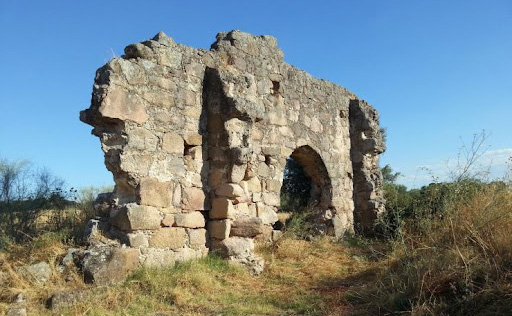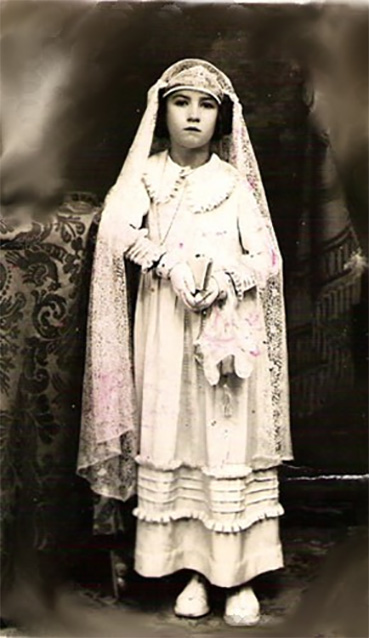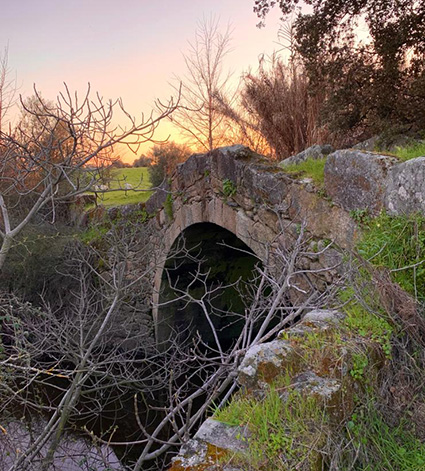14th century
Valparaiso (which means Paradise Dale) was built in the Middle Ages upon the ruins of a Roman village. All you can see today are the remnants of its church, its Roman bridge, a Roman fountain and the spirit of the ghosts and legends that still populate the fields by the banks of the stream still bearing the old name: Valparaiso (the valley of Paradise). The Roman road crossing this ancient village came down from the mountains and went through Peraleda towards the nearby Roman city of Augustobriga.

Although you can get here by car from the motorway A5 (take exit 174), hikers will very much prefer to get there on foot from Peraleda, taking the straight path where the Roman road used to go. Right after crossing the bridge, you will find yourself in the land of legends and mysteries, and only the brave will dare to look for its ruins in the night.
If you walk the little stretch from the bridge to the church ruins, you may find yourself crossing patches of dense fog like cotton shreds floating; maybe because you are still close to the river in a hollow. just maybe. It is right here where the ghost of a girl dressed in a white First-Communion gown is seen sometimes. You can read about this creepy story here: The Communion Girl.

Among the stone walls dividing the fields around what used to be a village, some locals claim to have seen a fleeting reflection on the scales of another one of its inhabitants: the Serpent of Valparaiso, which guards an ancient treasure still hidden somewhere in the depths of the old village, once flourishing but then devastated by a plague of ants. Or so they say, but who can tell the truth in the land of myths?

Roman tombs have been found in the area, including the treasure known as the Tesoro de la Cañada (today in the provincial museum), and also the remains of an important Roman villa whose columns disappeared not many decades ago. It is still not very rare to find a Roman coin rolling on the ground among the soil, and throughout the area there are lithic remains of the Aurignacian culture of the Upper Paleolithic. According to experts, these remains were so important that if they had been known before those found in Aurignac, today this culture would be called Peraldean. Decades of looting have shifted most of these remains to museums of all kinds or to private showcases though.
But not everything in Valparaíso is fleeting or elusive, the Roman bridge is still standing about 10 minutes from the ruins of the church. Before reaching the stream, you have to take a path that goes to the right and is sometimes overgrown with grass, but you will find it easily because it is marked on Google Maps.

Location:
Escrito por Angel Castaño


